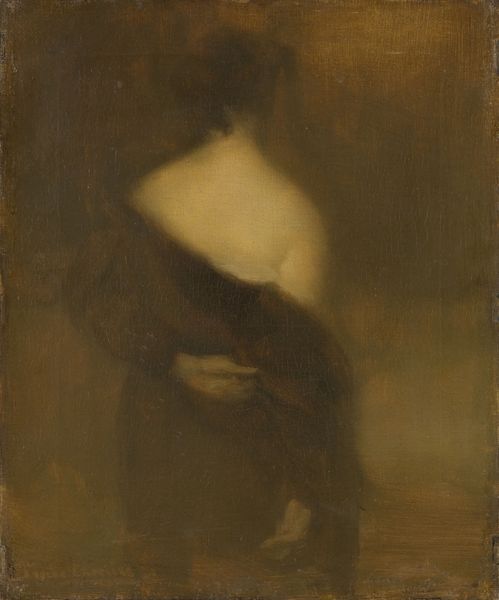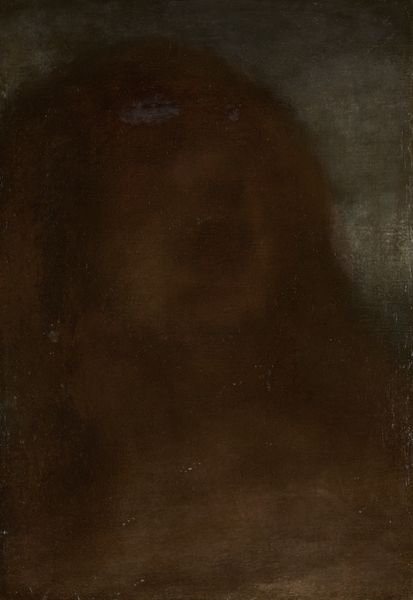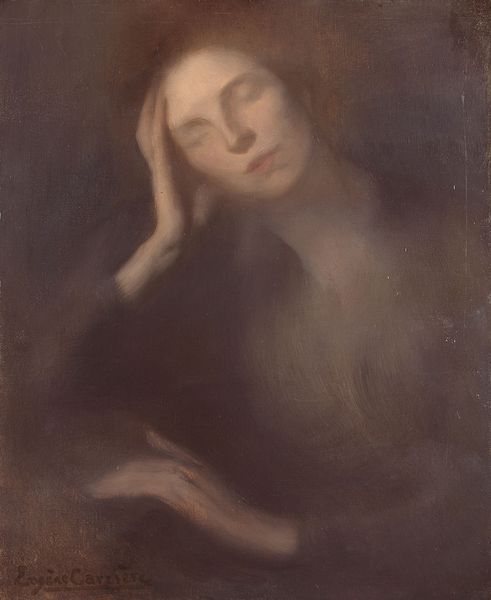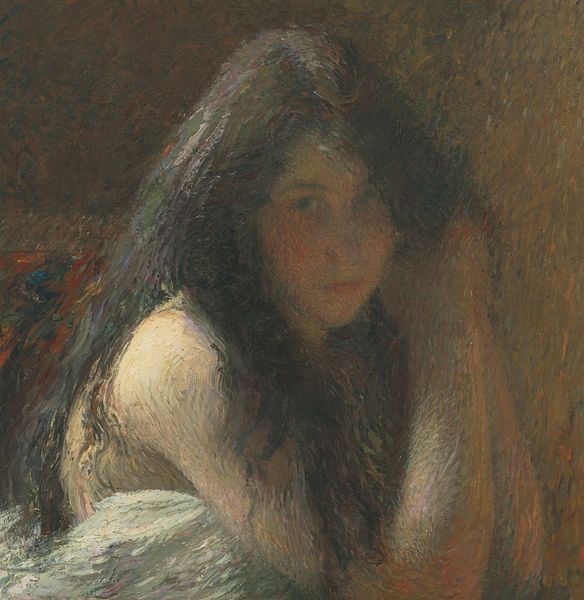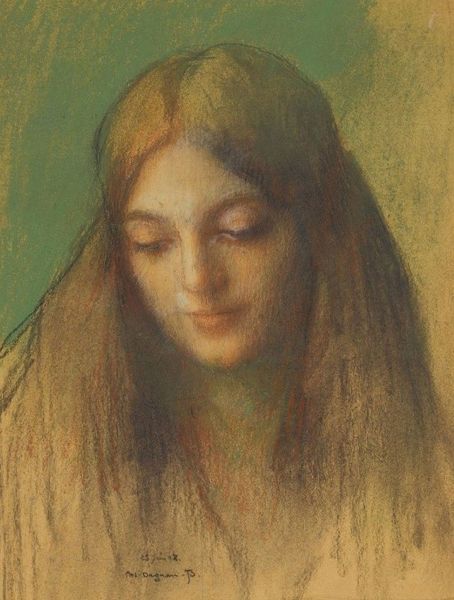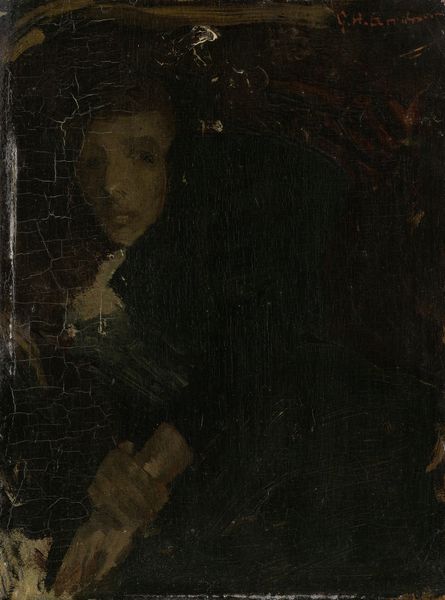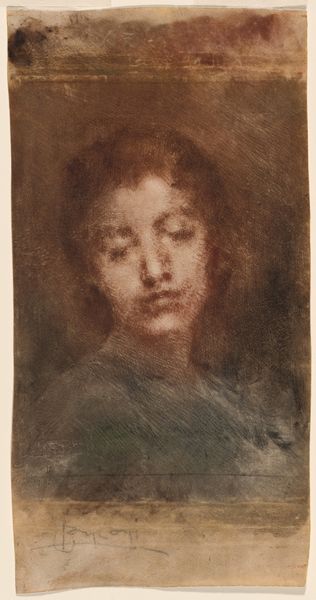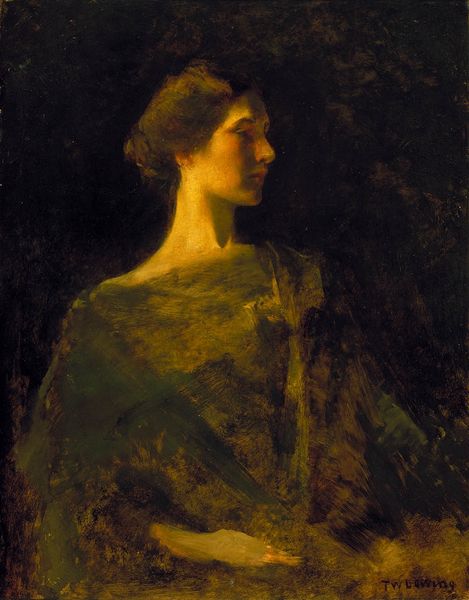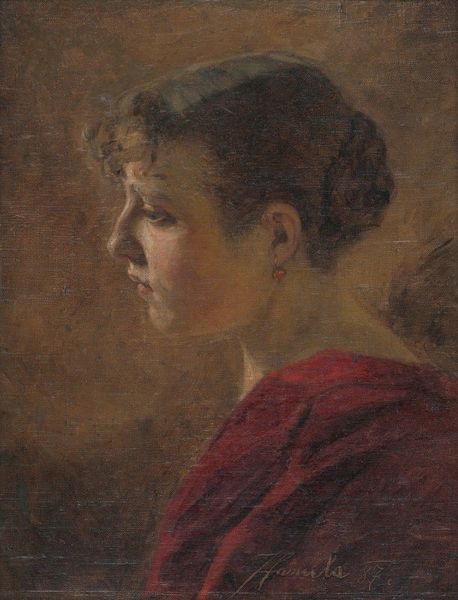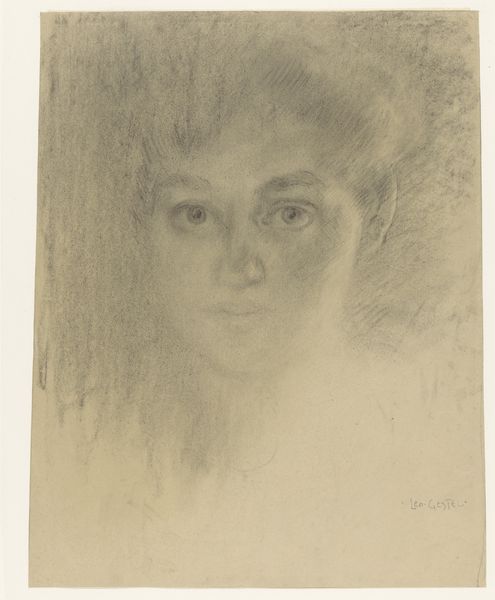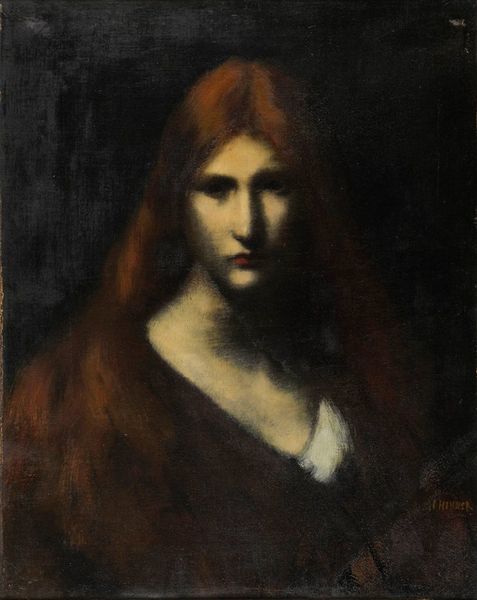
painting, oil-paint
#
portrait
#
painting
#
oil-paint
#
figuration
#
romanticism
#
chiaroscuro
Copyright: Public domain
Ernest Hébert captured Ophelia, the tragic Shakespearean figure, on canvas. She is the embodiment of unrequited love, madness, and death by drowning. The flowers that adorn her are symbolic, each carrying a specific meaning deeply rooted in cultural memory. We see the faint traces of blooms – perhaps violets for faithfulness, or pansies for remembrance. These floral motifs echo across time, appearing in medieval tapestries, Renaissance paintings, and even in the garlands of Pre-Raphaelite art. The symbolic language of flowers transcends mere decoration; it's a visual code, a secret dialogue passed through generations. Consider, too, the watery depths that claimed Ophelia. Water, so often a symbol of life, becomes here an agent of death, reflecting a deep-seated fear of the unknown, the chaotic, the feminine. This is a powerful force, engaging viewers on a subconscious level with its suggestion of intense emotional states. Note how the flowers and the water intertwine, creating a cyclical narrative of life, death, and renewal, forever resurfacing and evolving in different historical contexts.
